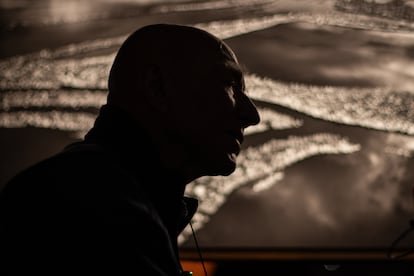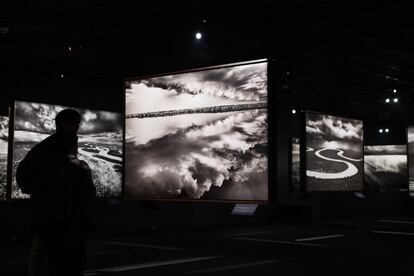Let’s look closely at the image. Let’s contemplate that wild poetry. It is a black and white photograph, but so powerful that whoever observes it knows that what is reflected in a powerful green, of sap, life. It is an Amazon mangrove, full of palms, trees, tropical plants that are reflected in a mirror of static water. It is a piece of the Amazon immortalized by the Brazilian photographer Sebastião Salgado, who for seven years immersed himself in that green immensity of jungles and mangroves to leave us a vivid portrait of what many call the lung of the planet: a Amazon that gives us life, Although we are taking it away. This is the salgado aid cry to preserve that richness that is extinguished.
Mangrove photography is part of an enormous exhibition that the Brazilian inaugurated last Thursday at the National Museum of Anthropology, in Mexico City. There are 230 images that invite us to make an observation and introspection trip. Reflect on the future of that green enormity that has been systematically preceded for decades. Salgado does not face us with the brutal shock of machines sweeping trees or cattle that as cancer carches thousands of hectares. It is not the violence of its invaders that is seen in these images, but a land of peace, of absolute beauty, of native peoples that hunt, collect, fish, of indigenous children who give refreshing dip in its waters. Of people who respect nature because nature gives them life. Is it possible that our voracity does not let us see the forest in the coming decades?
See carefully, observe thoroughly, this is what remains, they tell us the images of Salgado. Yes, because only in 2021 the Brazilian Amazon lost 13,235 square kilometers of trees in a year. An area much larger than the state of Querétaro, of just 11,000 square kilometers! With that destruction, the jungle loses its biodiversity, the ability to refresh the planet and stop global warming. That is why Salgado images are so powerful, that they remind us how fragile this system is, that if we do not stop its destruction, we also condemn ourselves.
This trip to a supernatural beauty and the life of the communities that live with harmony in it can be visited until May 4, 2025 in the Temporary Exhibition Hall of the Great Mexican Museum. The exhibition was inaugurated by the Secretary of Culture, Claudia Curiel, and the General Director of the National Institute of Anthropology, Diego Prieto Hernández. “While Sebastião’s work has a great aesthetic role, his greatest relevance is in his social vocation, in the depth of working with communities to give us a human dimension that teaches us the brutality and contradiction of injustice in the world, But it also leaves us a legacy about everything we have to take care of: nature and native peoples, ”said Prieto.

Salgado has traveled to the Amazon for seven years through 58 expeditions by land, water and air, entering its jungle depth to capture the life it contains. The Brazilian recalled that humanity has devastated 18% of the Amazon, so his photographer’s work, an anthropologist of the image, is to remind us that we can still protect the remaining 82%. See these images, the exhibition tells us, if they do not move to action, we are insensitive. The exposure is made to overwhelm, because it is accompanied by the sounds of the jungle, the song of the birds, the crazy dance of the trees, the brutality of its floods, the symphony of its animals, the soft runrún of its waters. There are also seven testimonial videos of leaders of indigenous peoples, who talk about their lives and the problems of their communities. Or rather the problem: devastation. This is a vivid sample of a treasure that we are still in time to save. It is a cry for help for the Amazon.

